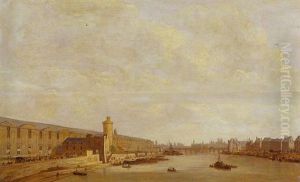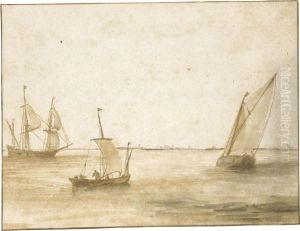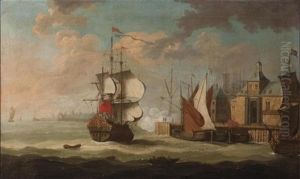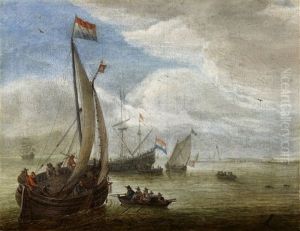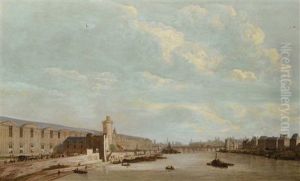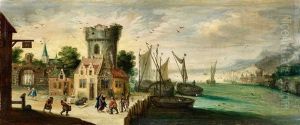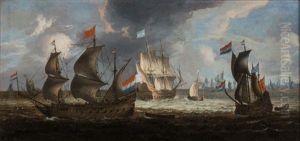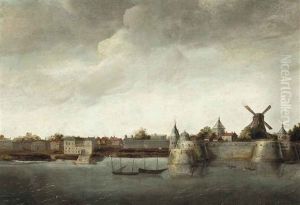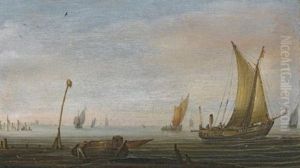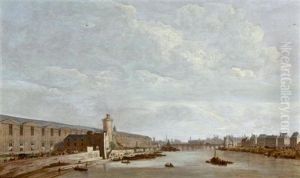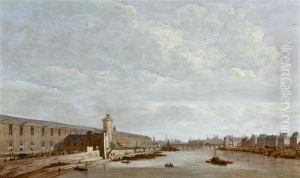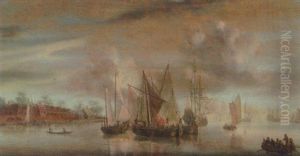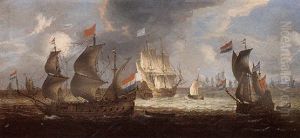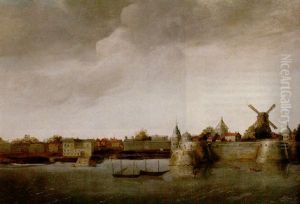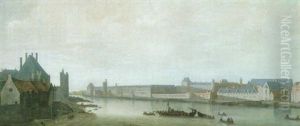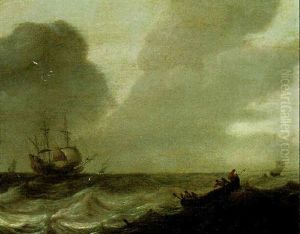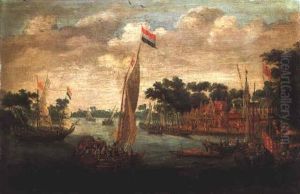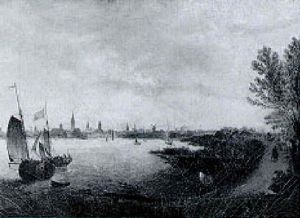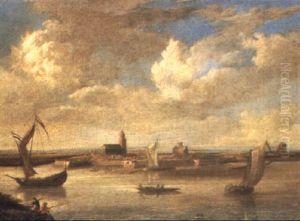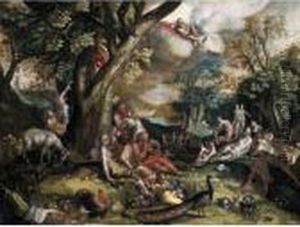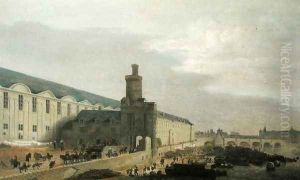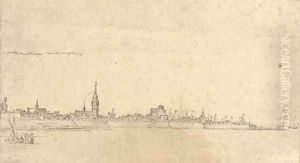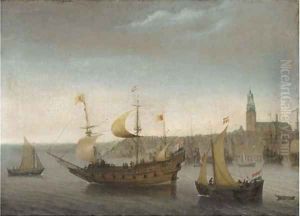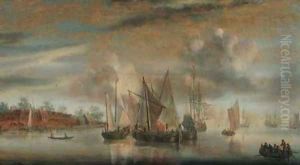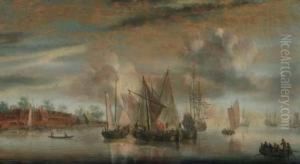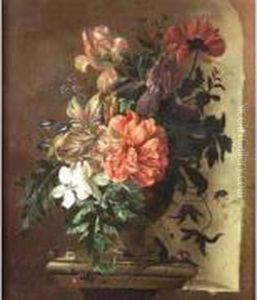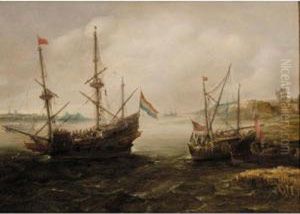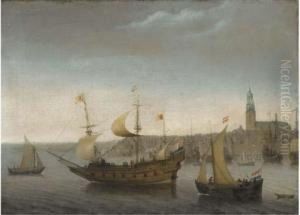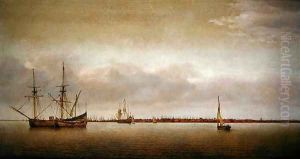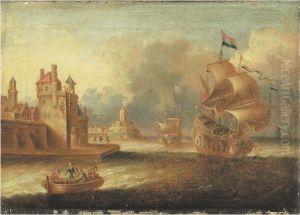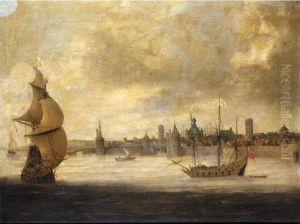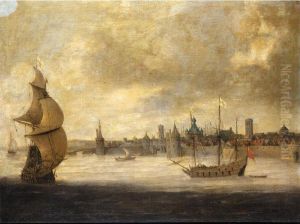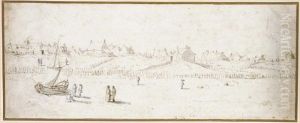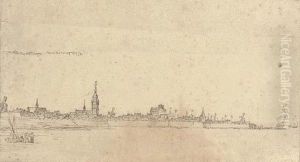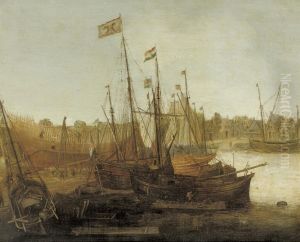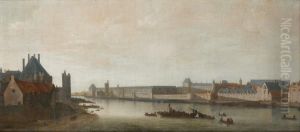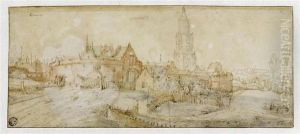Abraham de Verwer Paintings
Abraham de Verwer was a Dutch Golden Age painter known for his marine landscapes and cityscapes. Born in Amsterdam in 1585, de Verwer's artistic career evolved during a period when Dutch art was rapidly developing, particularly in the realm of landscape and maritime painting.
De Verwer's early life and training are not well documented, but he likely apprenticed under a local artist, as was customary at the time. He became a member of the Haarlem Guild of St. Luke in 1614, indicating his professional status as an artist. De Verwer's works often depicted Dutch harbors, rivers, and coastal scenes, which were popular subjects due to the Netherlands' maritime power and commercial prosperity.
He was particularly adept at capturing the play of light on water and the bustling activity of port life. His views of Amsterdam and other Dutch cities are marked by a high degree of accuracy, suggesting that he worked from sketches made on location. De Verwer's paintings also reflect the influence of the tonal style of Jan Porcellis and Hendrick Vroom, whose works similarly focused on the effects of atmosphere and light.
Despite his talent, Abraham de Verwer remains a relatively obscure figure in art history, overshadowed by contemporaries like Jan van Goyen, Salomon van Ruysdael, and Simon de Vlieger. He did, however, contribute to the Dutch tradition of realistic landscape painting, and his works continue to be appreciated for their technical skill and serene beauty.
De Verwer's death in 1650 marked the end of a career that spanned a dynamic period in Dutch art. His paintings can be found in various museum collections, offering a window into the maritime culture of the 17th century Netherlands.
